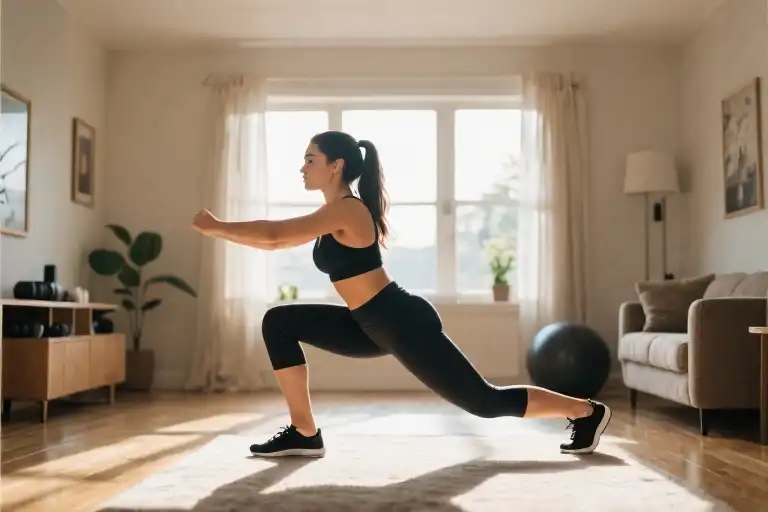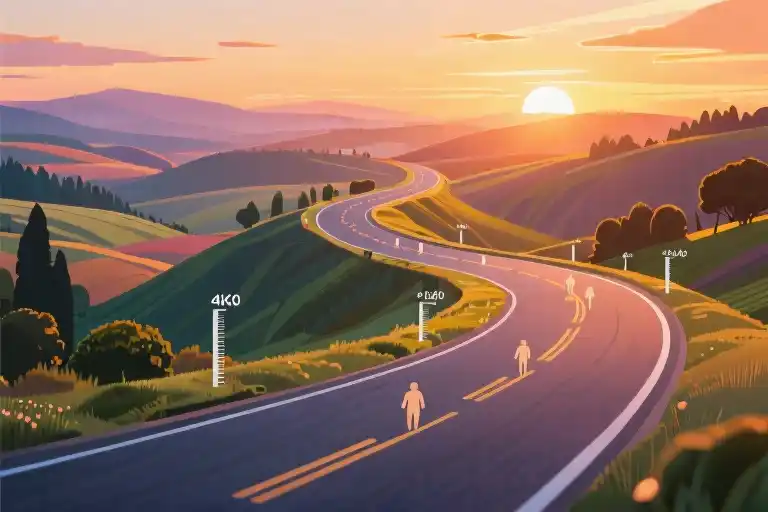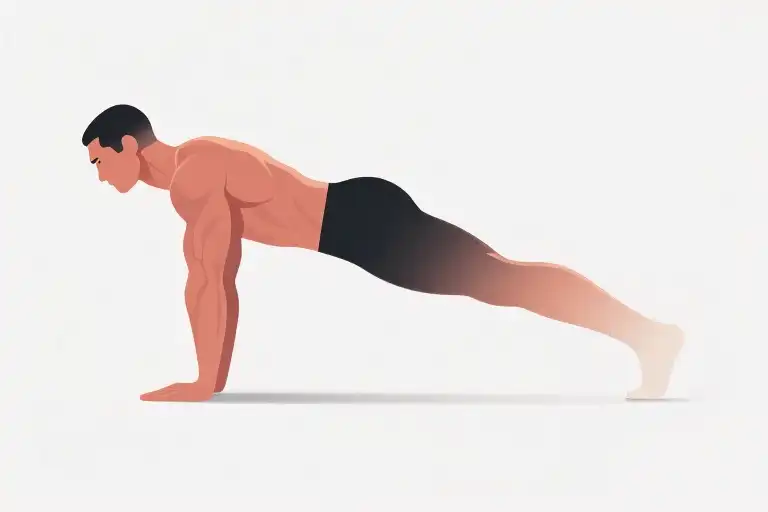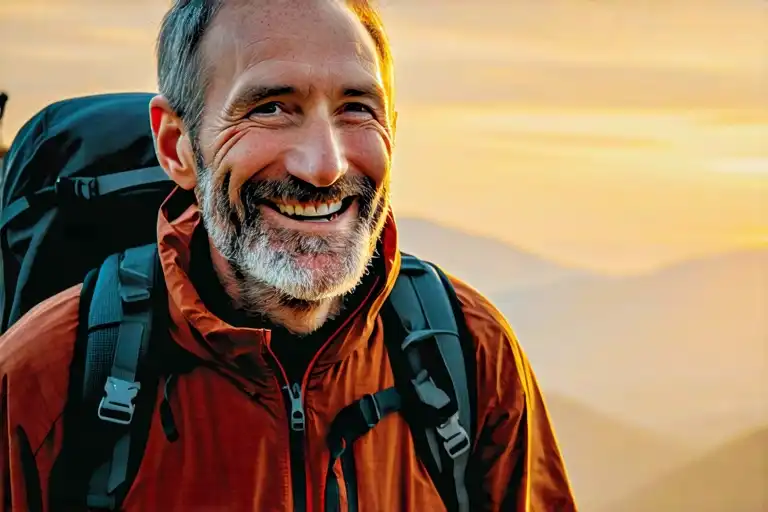The numbers tell a startling story: a century ago, only 10% of jobs required prolonged sitting. Today, that figure has skyrocketed to 90%. We’ve engineered movement right out of our lives while paradoxically obsessing over gym memberships – 80% of which go unused after February.
There’s something fundamentally broken about our approach to health when the world’s longest-living populations never set foot in gyms. Take the shepherds of Sardinia’s Blue Zone, who log 12 miles of daily walking just tending their flocks – not as exercise, but as life. Their secret isn’t sweaty workout sessions, but what researchers call ‘natural movement’, the kind of activity woven so seamlessly into daily living that it doesn’t feel like effort at all.
This revelation challenges everything we’ve been taught about fitness. While we’re tracking steps and counting reps, Blue Zones centenarians are simply living in ways that require motion: kneading bread by hand, walking to neighbors’ homes, gardening into their 90s. Their longevity comes not from discipline, but from design – environments that make movement inevitable and enjoyable.
The irony? Our knowledge economy has created the perfect health storm. We sit to work, sit to commute, then try to compensate with frantic gym sessions that often lead to burnout. The modern fitness paradox leaves us exhausted yet under-moved, spending hundreds on equipment that Blue Zones residents would likely repurpose as clotheslines or planter boxes.
Perhaps it’s time we stop treating movement as medicine to be measured in doses, and start seeing it as nourishment to be tasted throughout the day. After all, the world’s healthiest people didn’t out-exercise their peers – they simply forgot to stop moving.
The Fitness Trap: When Exercise Becomes a Modern Burden
We live in the golden age of fitness. Gyms sprout on every corner, fitness trackers monitor our every step, and workout apps promise six-pack abs in just minutes a day. Yet despite this apparent fitness revolution, research shows that over 80% of gym memberships go unused after the first five months. There’s a fundamental disconnect between our good intentions and our daily reality.
The Sedentary Crisis No One Talks About
A century ago, only 10% of jobs required prolonged sitting. Today, that number has skyrocketed to 90%. Knowledge workers now average just 3,000 steps daily – a far cry from the 10,000 our hunter-gatherer ancestors routinely achieved. This seismic shift in activity levels comes with devastating health consequences:
- Metabolic slowdown: Sitting more than 6 hours daily increases diabetes risk by 19%
- Back pain epidemic: 80% of office workers report chronic back issues
- Premature aging: Sedentary behavior shortens telomeres (protective DNA caps) equivalent to 8 biological years
Why Conventional Exercise Often Fails
The fitness industry sells intensity, but three critical flaws undermine traditional approaches:
- The time paradox
- 60% of adults cite “lack of time” as their exercise barrier
- Commuting to gyms often consumes the very time meant for workouts
- The willpower gap
- Neuroscience shows motivation fluctuates daily
- Relying on discipline makes exercise the first casualty of busy schedules
- The activity disconnect
- 1 hour at the gym doesn’t offset 10 hours of sitting
- Studies show exercise benefits vanish with prolonged inactivity
The Hidden Cost of Convenience
Modern efficiency has engineered movement out of our lives:
- Remote controls replace walking to change channels
- Robot vacuums eliminate bending and sweeping
- Drive-thrus mean we never leave our cars
Each technological “advance” silently steals micro-movements our bodies evolved to expect. The result? We’ve created the perfect storm for metabolic disease while spending billions on gym memberships that gather dust.
A New Way Forward
The solution isn’t more exercise – it’s more natural movement woven throughout the day. Like the world’s longest-lived people in Blue Zones, we need to rediscover the health benefits of:
- Purposeful walking (not treadmill sessions)
- Functional bending and lifting (not weight machines)
- Whole-body coordination (not isolated muscle training)
This isn’t about abandoning exercise, but rather redefining what counts as movement. In the next section, we’ll explore how Blue Zone centenarians stay effortlessly active – and how you can adapt their wisdom to modern life.
The Blue Zones Secret: Longevity Without the Gym
Forget everything you’ve been told about needing intense workouts for a long, healthy life. The world’s longest-living people have never set foot in a gym or tracked their macros. From the mountain villages of Sardinia to the tropical islands of Okinawa, Blue Zones residents share one surprising habit: they move naturally throughout the day without ever “exercising” in the traditional sense.
The 5 Blue Zones and Their Movement Rituals
Researchers have identified five regions where people regularly live past 100 with remarkable health:
- Okinawa, Japan: Elderly islanders maintain vegetable gardens well into their 90s, practicing daily squatting and stretching through farming
- Sardinia, Italy: Shepherds walk 5-8 miles daily over hilly terrain, their constant low-intensity movement maintaining cardiovascular health
- Nicoya Peninsula, Costa Rica: Centenarians haul water by hand, grind corn manually, and walk to neighbors’ homes instead of calling
- Ikaria, Greece: Mountainous terrain forces residents to navigate inclines daily, while gardening provides natural resistance training
- Loma Linda, California: Seventh-Day Adventists follow a “walking Sabbath” tradition with group nature hikes
What connects these diverse cultures? Their environments make movement unavoidable. As Blue Zones researcher Dan Buettner notes: “It’s not about adding activities to your day, but structuring your life so movement happens by default.”
The Science Behind Unconscious Movement
Three key physiological benefits explain why natural movement outperforms gym sessions for longevity:
1. Cardiovascular Maintenance
- Constant low-intensity activity (like walking 6-8 miles/day in Sardinia) keeps blood flow consistent without stressing the heart
- Studies show this approach lowers blood pressure more effectively than sporadic intense workouts
2. Muscle Engagement
- Daily tasks like kneading dough (Ikaria) or hauling firewood (Nicoya) work all muscle groups functionally
- Unlike isolated weight training, these compound movements prevent muscular imbalances
3. Neurological Benefits
- The variety of natural movement stimulates proprioception (body awareness)
- Okinawan elders’ gardening routines, for example, combine balance, coordination and fine motor skills
Researchers call this NEAT (Non-Exercise Activity Thermogenesis) – the energy expended for everything except sleeping, eating or sports. Blue Zones residents burn 300-500 more NEAT calories daily than sedentary office workers.
A Day in the Life: Nicoya’s Centenarians
Anthropologists tracking 103-year-old Nicoyan women observed this daily movement pattern:
- 5:30 AM: Hand-grinds corn for tortillas (15 minutes of arm/back engagement)
- 6:00 AM: Walks to chicken coop to collect eggs (400 steps on uneven terrain)
- 9:00 AM: Carries laundry to community wash area (load-bearing walk)
- 2:00 PM: Kneels to tend herb garden (hip flexibility and core strength)
- 5:00 PM: Dances with grandchildren (balance and coordination)
Notice what’s missing? No scheduled “workout” blocks. Every movement serves a practical purpose while keeping the body active. As one Nicoyan centenarian joked: “My gym membership? It’s called being alive.”
Modern Adaptations of Ancient Wisdom
While we can’t all become Sardinian shepherds, we can borrow these principles:
- The 20/8 Rule: For every 20 minutes seated, take 8 steps (mimics shepherds’ grazing patterns)
- Task Stacking: Combine movement with socializing (walking meetings instead of coffee dates)
- Convenience Removal: Store daily items intentionally far away to create “necessary” walks
As Blue Zones research confirms: longevity isn’t about how intensely you move, but how consistently you move naturally throughout your life’s rhythm.
Urban Survival Guide: Adapting Blue Zone Movement to City Life
For those of us navigating concrete jungles rather than olive groves, the Blue Zone lifestyle might initially seem out of reach. But with intentional environmental design, we can recreate the constant gentle movement that keeps centenarians spry well into their 90s. Here’s how to transform your workspace and living areas into longevity-promoting zones.
Office Revolution: Rethinking the 9-to-5 Environment
Dynamic Workstation Setup
The average office worker spends 6.5 hours daily sitting – a posture linked to increased mortality risk. Counter this with:
- Height-adjustable desks: Alternate between sitting and standing every 30 minutes. Pro tip: Stand during phone calls and sit for focused computer work.
- Peripheral positioning: Place printers, trash bins, and supply cabinets at least 20 steps from your desk. This creates natural movement breaks that add up to nearly a mile of extra walking per week.
- Active seating options: Swap your office chair for a stability ball 1-2 hours daily to engage core muscles subtly.
Walking Meetings (The Silicon Valley Secret)
Tech giants like Facebook and Google have adopted this Blue Zone-inspired practice:
- For 1:1 meetings: Suggest “walk-and-talk” sessions around the building or nearby park.
- For group brainstorming: Use voice recording apps to capture ideas while moving.
- Bonus benefit: Studies show walking meetings increase creative output by 60% compared to sedentary sessions.
Home Makeover: Creating Movement-Friendly Living Spaces
Kitchen Flow Redesign
Traditional kitchen layouts prioritize efficiency, but we want beneficial inefficiency:
- Store everyday dishes in high and low cabinets rather than at waist level.
- Use a manual coffee grinder and French press instead of pod machines.
- Keep countertop appliances (toaster, blender) in cabinets to require setup/cleanup movements.
Balcony Gardening 101
Even urban dwellers can reap Blue Zone benefits through micro-gardening:
- Starter plants: Begin with low-maintenance herbs (basil, mint) or dwarf tomato varieties.
- Vertical solutions: Use hanging planters or wall-mounted pots if space is limited.
- Daily care ritual: Morning watering becomes a mindful movement break rather than a chore.
The Commuter’s Advantage
Transform dead transit time into NEAT (Non-Exercise Activity Thermogenesis) opportunities:
- Subway/bus riders: Stand without holding rails (engages core) or do calf raises.
- Drivers: Park at the lot’s farthest corner; treat the walk as bonus movement.
- Remote workers: Mimic a “commute” with a 10-minute neighborhood walk before starting work.
Digital Age Adaptations
When technology threatens to immobilize us, turn it into an ally:
- Set hourly “movement reminders” using smartphone apps like Stand Up!
- Use fitness trackers to monitor general activity rather than intense workouts.
- Try “audio walking” – listen to podcasts/audiobooks only while moving.
Remember: The goal isn’t to replicate Okinawan farmers’ lifestyles exactly, but to identify transferable principles. Start with one office modification and one home adjustment this week. Within a month, these micro-changes will accumulate into significant health dividends – no gym membership required.
The Lazy Starter Pack: 30-Second Changes That Add Up
Small shifts in daily routines can create big impacts over time. For time-crunched professionals seeking sustainable ways to incorporate natural movement, these micro-adjustments require zero equipment and minimal effort—just smarter choices within existing habits.
The Commuter’s Staircase Experiment
Next time you approach an elevator bank, notice how most people instinctively reach for the button. Here’s an alternative:
- Week 1: Take stairs for any trip under 3 floors
- Week 2: Add 1-2 minutes of stair walking during lunch breaks
- Week 3: Combine with “phone meetings on the move” (wireless earbuds recommended)
Office workers who adopt stair-climbing burn 5-10% more daily calories than elevator users, according to British Journal of Sports Medicine. The key? Start with achievable targets—even two flights daily creates compound benefits.
Parking Lot Strategy: Walk More Without Trying
Retail therapy gets healthier when you:
- Circle the lot twice before parking (adds 200-300 steps)
- Always choose spots furthest from store entrances
- Return shopping carts instead of using corral drop-offs
This leverages the “Blue Zones principle” of environmental design—making movement unavoidable yet effortless. Supermarket parking lots average 250 feet from door to far spaces, giving you 90 seconds of bonus walking per trip.
Morning Routine Upgrades
Transform passive moments into micro-workouts:
- Toothbrushing Squats: Do 10-15 knee bends during two-minute brushing
- Coffee Waiting Lunges: Alternate legs while brewing
- Towel Drying Stretches: Reach overhead with each dry-off section
These “movement snacks” activate major muscle groups during otherwise sedentary moments. A Mayo Clinic study found such NEAT (Non-Exercise Activity Thermogenesis) movements can burn 350+ extra calories daily—equivalent to a 3-mile walk.
Office-Friendly Movement Hacks
Even deskbound hours offer opportunities:
- Printer Pilgrimages: Relocate office equipment 30+ steps from your desk
- Hydration Strategy: Use small glasses (forces refill trips)
- “Walk-and-Talk” Meetings: Suggest mobile 1:1s (63% of professionals report better creativity during walking meetings)
Remember: Consistency trumps intensity. As Blue Zones research shows, the world’s longest-lived people don’t do CrossFit—they simply move frequently at gentle paces. Start with one change this week, and let your environment do the work for you.
The Real Secret to Longevity: Movement That Doesn’t Feel Like Exercise
For decades, we’ve been sold the idea that health requires grueling gym sessions and meticulously tracked workouts. But what if everything we thought we knew about movement was missing the bigger picture? The world’s longest-lived people have quietly been showing us a better way—one that doesn’t involve dumbbells or fitness trackers.
Rethinking What Counts as Exercise
The Blue Zones—regions where people regularly live past 100—reveal a surprising truth: longevity isn’t about how many hours you log at the gym. It’s about how you move through your daily life. These centenarians don’t “work out” in the traditional sense. Instead, they:
- Tend gardens that provide both food and gentle physical activity
- Walk as their primary mode of transportation
- Use their bodies for household tasks rather than relying on machines
- Live in environments that naturally encourage movement
This concept, known as NEAT (Non-Exercise Activity Thermogenesis), accounts for the majority of calories burned by Blue Zone residents. Unlike intense workouts that require recovery time, these natural movements can be sustained daily without exhaustion.
Your Personal Movement Challenge
Tomorrow, choose one simple way to incorporate more natural movement into your day:
- Take a walking meeting (even if it’s just around your living room)
- Park farther from store entrances
- Set a reminder to stand and stretch every 30 minutes
- Hand-wash dishes instead of using the dishwasher
- Take the stairs for any trip under three floors
Track your choice in a notes app or journal. The key isn’t perfection—it’s simply noticing opportunities to move more naturally throughout your day.
Beyond Physical Health: The Cognitive Benefits
Regular natural movement does more than strengthen muscles—it nourishes your brain. Studies show that:
- Walking stimulates creative thinking by up to 60%
- Gardening reduces stress hormones like cortisol
- Daily physical activity may delay cognitive decline by several years
This isn’t about adding years to your life, but adding life to your years. When movement becomes woven into your daily rhythm rather than being a separate “task,” you create sustainable habits that support both body and mind.
The Takeaway
Health isn’t found in extreme measures, but in the small, consistent choices we make each day. You don’t need expensive equipment or hours of free time—you just need to rediscover the joy of moving through your world with intention. Start small, be kind to yourself, and remember: the healthiest movement is the kind you’ll actually keep doing.





